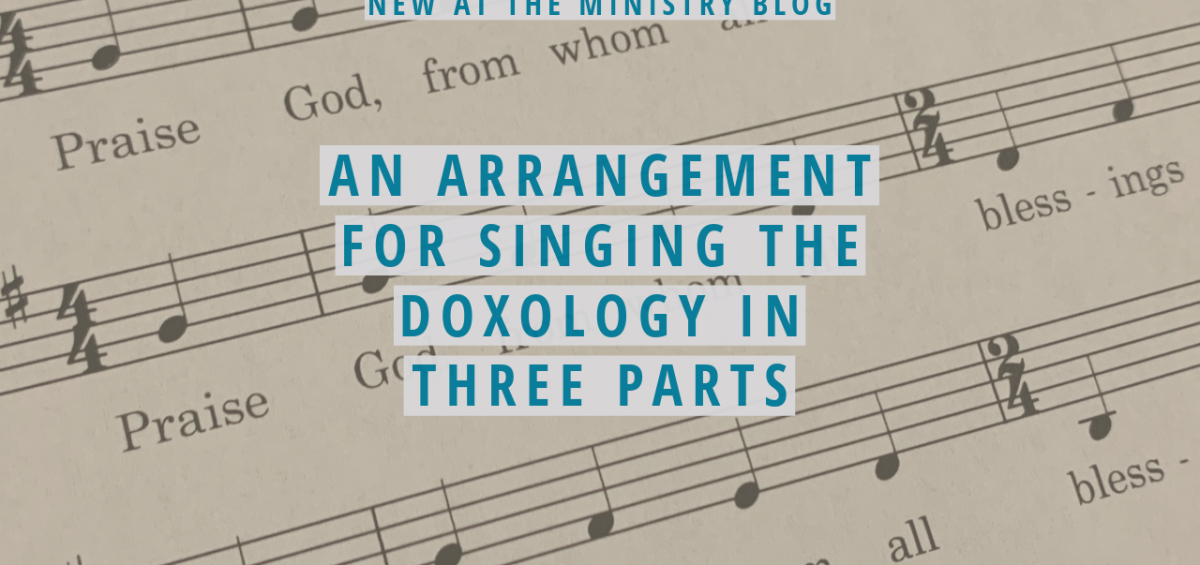This Sunday evening we are planning to learn to sing an arrangement of the Doxology in three parts. The rationale for this particular arrangement, versus the many possible good arrangements, will be explained Sunday evening. Some of you may notice that the arrangement is not SATB (Soprano, Alto, Tenor, Bass…like a hymnal). This is intentional, and I’ll explain more on Sunday.
This post provides you with some resources for learning a part, although you do not need to arrive on Sunday with a part already learned. And if it all looks like Greek to you, don’t sweat it; we’ll learn together!
Below you will find links to music for the parts, as well as a quick demo of the parts. The first recorded demo presents the arrangement with all the parts at equal volume, the other two recordings highlight Harmony 1 and Harmony 2 in order to help you hear a particular part.
You may need some assistance in figuring out which part to sing. Here are some suggestions:
Men:
We want the men to lead, so men: sing the Lead and sing it loud. The melody of an arrangement is like our solar system’s Sun; its gravity pulls everything together. Men singing with faith and force will provide a solid anthem for the orbiting parts, which will complement the leadership of the men. If you need to, sing the part down an octave. If down the octave is too low for you, this indicates that you likely can sing the melody where it lies, but you may just need more effort and technique to sing some of the higher notes.
Getting Technical for the Men:
Some of you already have experience with choral music, so here are a few details. The melody (Lead part) falls within both the Tenor and Baritone ranges, and basically within the bass range as well, although on the high end. Harmony 2 can be sung by a true Tenor if you’d really like to try a part. Harmony 1 can be sung by Jon Anderson (the lead singer of Yes), but probably not by any of us.
Ladies:
Ladies, you can pick a part based on whether you feel like your voice is pitched relatively higher or lower. Your speaking voice is a pretty good indicator. A true soprano might find even the higher harmony part a bit low, though, so you’re welcome to choose the melody.
Getting Technical for the Ladies:
The Lead part (melody) falls within the true Soprano range, Harmony 1 falls within both the Mezzo-Soprano (the Mezzo voice being bit lower than true Soprano) and Alto ranges, and Harmony 2 falls nicely in the true Alto range. In this day and age, you are likely either a Mezzo or an Alto.
Links to Resources:
Sheet Music for 3-Part Arrangement
Demo of all three parts at equal volume:
Demo with Harmony 1 highlighted:
Demo with Harmony 2 highlighted:









